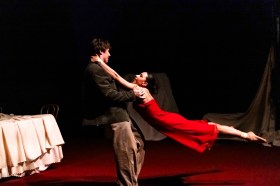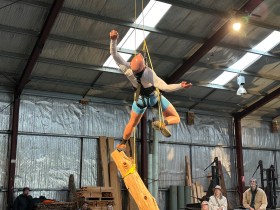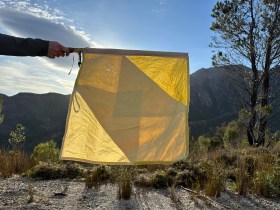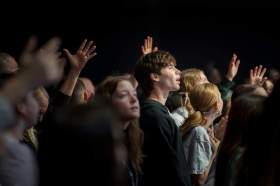Aboriginal and Torres Strait Islander readers are advised that this article contains the names and images of, and references to, deceased persons.
I wasn’t expecting to like this film as much as I did. To be completely honest, I knew nothing about its subject – a family of Aboriginal circus performers known for their daring and international fame.
The Colleano Heart is a remarkable documentary style film about resilience and adaption, and a family that became a runaway global success. The key word here is runaway.
Director Yaegl woman Pauline Clague weaves the true narrative of family of 13 from Gamilaroi Country and the rural New South Wales town of Narrabri. Over four decades, the family’s shapeshifting to evade authorities and the draconian laws of a world shaped by racism would lead them to the world’s most prized stages.
Descendants of the family were in the audience at the film’s premiere at the Adelaide Film Festival, which adds to this sense of witness in unearthing this tale.
The Colleano Heart – quick links
The Colleano Heart: A decade of research to bring family tale back to light
Using home movies taken by the star of the family, Con Colleano (Cornelius Sullivan), along with letters, recordings and news clippings, the story is told by Clauge, Gamilaraay historian Deb Hescott and American-born Molly O’Donnell, the granddaughter of matriarch Julia Vittorine Sullivan (née Robinson), a woman of partial Bundjalung descent who lived in from 1878 to 1953.
The decade-long research that has gone into this film is impeccable and trans-continental, bringing two halves of a story together – and indeed climaxes with a moving family reunion. It’s the kind of storytelling that blows your mind, leaves you with a thousand questions and the longing to watch it again. It’s a Hollywood hit at the fringes.
While it has a bit of a homey production feel about it at times, it is nicely edited by Andrea Lang and Bonnie Fan and does a great job of weaving the soft archival footage with more punchy kodachrome colours, the rich colours of Country and the dross of everyday scenes.
Susan Lumsdon’s cinematography gives this story the epic reach it demands and Mi-kaisha Masella’s score for the film adds that constant grounding that is so important to this narrative. Overall, you can’t go wrong with this tale – it is inspiring, amusing, adventurous and emotional.
From Lightening Ridge to Barnum & Bailey, Hitler and beyond
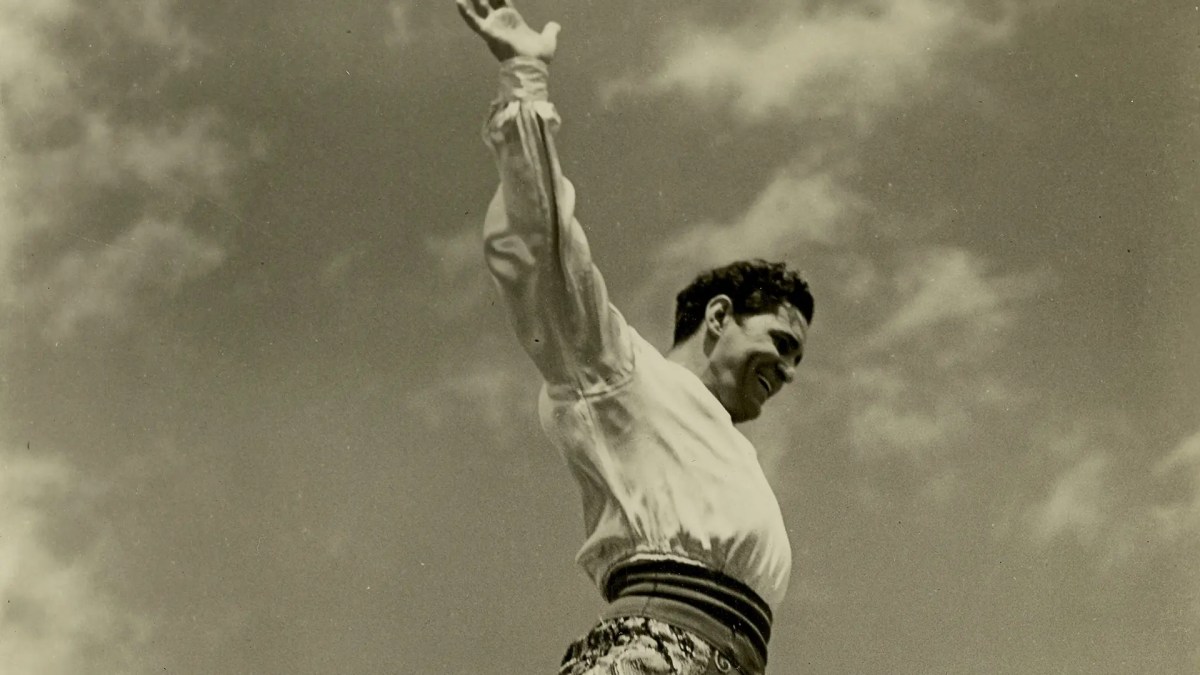
The story starts in 1984 when a 16-year-old Julia marries Irish boxer Con Sullivan, joining the touring tent circuit in rural Australia. The pair had 11 children, mainly girls, who all became part of a travelling circus act, highly athletic, extremely attractive, ambitious, competitive amongst themselves and tightly knit.
The film bridges a period prior to Federation through to the draconian post-Federation period when ‘half-caste’ children were taken from their families and forced into mission education, and Aboriginal people were denied travel across borders and owning businesses. They rose above it all.
Due to their pale complexion, the family adapted to survive in plain sight, taking their circus act on the road and naming themselves the Italian-sounding Colleanos. They regularly reinvented themselves to stay ahead of the arresting police, passing as the Royal Hawaiian Troupe and then later the Akabah Arabs.
By around 1916 they were the most prestigious act in Australia, performing from Queensland to New South Wales and into Victoria before the war stopped all travel. They recreated themselves with the rise of vaudeville in the 1920s, giving the illusion that they were a much bigger international act.
In the early 1920s, a suspicious fire at Julia’s family home back in Narrabri, which resulted in the death of her grandmother, reminded them the government had them in their sites. Within days they took passage to London, thanks to connections made through their success.
By this time Con has perfected a forward somersault on a high wire – rewarding him with the title ‘wizard of the wire’ and stardom at London’s Hippodrome.
Racism, however, always followed them despite the success, fame and great fortune. So when the family joined the famed Barnum and Bailey circus, they became a Spanish act. At the time Con was earning USD$1500 a week an incredible amount then, and today.
Their fame only escalated, performing gigs all over Europe. The greatest twist, though, came when Con Colleano became a poster child of the Nazi regime for his good looks and athleticism. In competition, Mussolini awarded Con a medal as an honorary Italian.
Fearing the war, they left all their belongings and flew over the Swiss Alps and on to London, where they would entertain people in the Tube during air raids.
The family settled for a period in Pennsylvania before Con senior bought a pub in Forbes in rural NSW, not expecting that in the 1950s segregation and whites-only policies still existed, then returned to Florida to settle. It is truly epic.
As a viewer, you are holding on with each revelation. Con’s niece Molly – whose mother was Coral Colleano, famed for her triple ladder balancing act – brings a beautiful energy to the screen, and her connection with Clauge and Hescott is genuine.
The film is encapsulated in her final words, standing on Country and allowing the smoke of an ancestral connection waft over her: ‘I wanted to see where they were from. Instead, I found out where I was from.’
Why isn’t this story better known? It is amazing that it is 2025 that it is finally being told, which sadly says that we have not searched hard enough for our nation’s Aboriginal heroes.
The Colleano Heart premiered at the Adelaide Film Festival on 19 October in partnership with Tarnanthi: Festival of Contemporary Aboriginal & Torres Strait Islander Art. The film has a last festival showing on 23 October before it is screened on NITV in 2026.
ArtsHub travelled to Adelaide as a guest of Tarnanthi.

